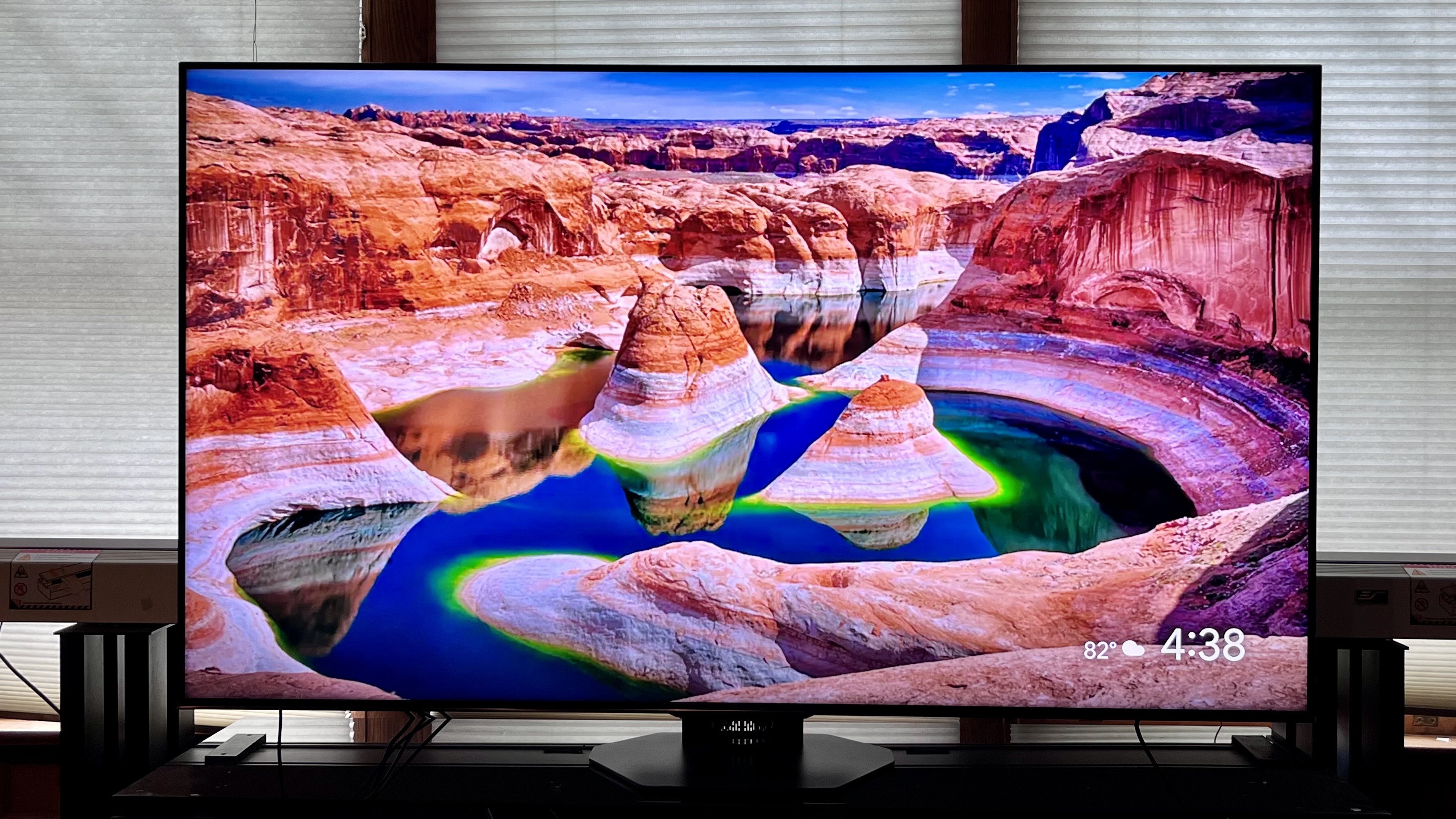
Hisense U8N: Two-minute review
The Hisense U8N is the company’s next-to-top mini-LED TV series for 2024, slotting in between the Hisense U7N and Hisense U9N. This new series follows the same path as the Hisense U8K, one of the best TVs of 2023, by boosting brightness over its predecessor and refining picture processing with a focus on local dimming performance.
While most TVs provide only incremental improvements over last year’s model, the new Hisense U8N takes a dramatic performance leap, specifically in its peak brightness, which is nearly twice what I measured on the Hisense U8K. Local dimming has also been improved, and even the TV’s sound quality seems better. Many of these performance boosts mirror what I found on the new TCL QM851G mini-LED model that rivals it – perhaps not surprising given the determination both brands have shown in recent years to not just break through, but dominate the US TV market.
The Hisense U8N has mostly similar gaming features to the U8K, with two HDMI 2.1 ports that support up to 4K 144Hz, VRR including FreeSync Premium Pro, ALLM, and Dolby Vision gaming, Those features, plus a Game Bar menu for on-the-fly tweaking of picture settings, make it a great TV for gaming, although we really want to see four HDMI 2.1 ports in the best gaming TVs. Google TV is used for the U8N’s smart TV platform in the US, and Hisense’s own VIDAA platform in the UK, Australia, and elsewhere.
Along with video and audio performance, design is an area where Hisense made some tweaks for the new series. The U8N has an adjustable-height pedestal stand as opposed to the U8K’s adjustable-width support feet. And Hisense’s full-size, backlit remote control is also a big improvement on the cheap-feeling compact one included with last year’s U8K. It also has an ATSC 3.0 tuner for receiving next-gen broadcast TV channels in the US.
Hisense TVs continue to be high-value options, and that includes the new U8N. At $1,499.99 / £1,799 / AU$2,699 list for the 65-inch model and with price drops in the US since launch, the U8N provides formidable competition to mini-LED offerings from traditional premium brands like Samsung, Sony, and LG, and is even priced lower than the TCL QM851G while providing mostly similar features and performance, making it an incredibly tempting option.
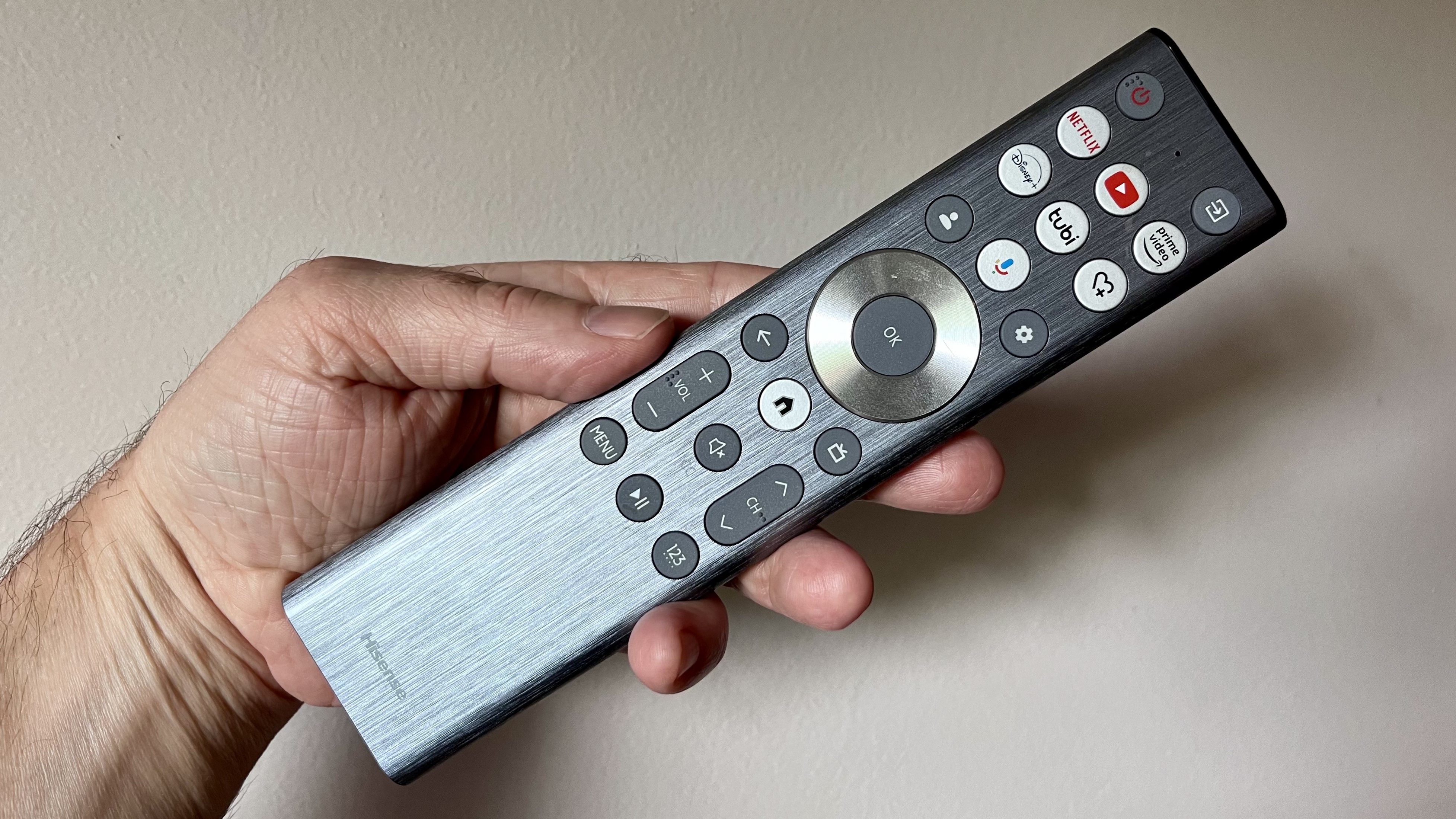
Hisense U8N review: Price and release date
- Release date: April 2024
- 55U8N: $1,099.99
- 65U8N: $1,499.99 / £1,799 / AU$2,699.99
- 75U8N: $1,799.99 / £2,299 / AU$3,699.99
- 85U8N: $2,799.99 / AU$4,999.99
The Hisense U8N series was released in April 2024 in screen sizes ranging from 55 inches to 85 inches. All sizes are available in the US, while the 65- and 75-inch models are sold in the UK and the 65-, 75-, and 85-inch sizes in Australia.
Prices for all models have dropped in all markets for the U8N series since launch, with the 65-inch model I tested selling for $1,299 in the US at the time of writing. Prices tend to fall fast on Hisense models in the US than in the UK and Australia, so the TV may be better value there than in other countries – I'm based in the US, and I'll be making my value judgments on the aggressive US pricing.
Hisense U8N review: Specs
Hisense U8N review: Benchmark results
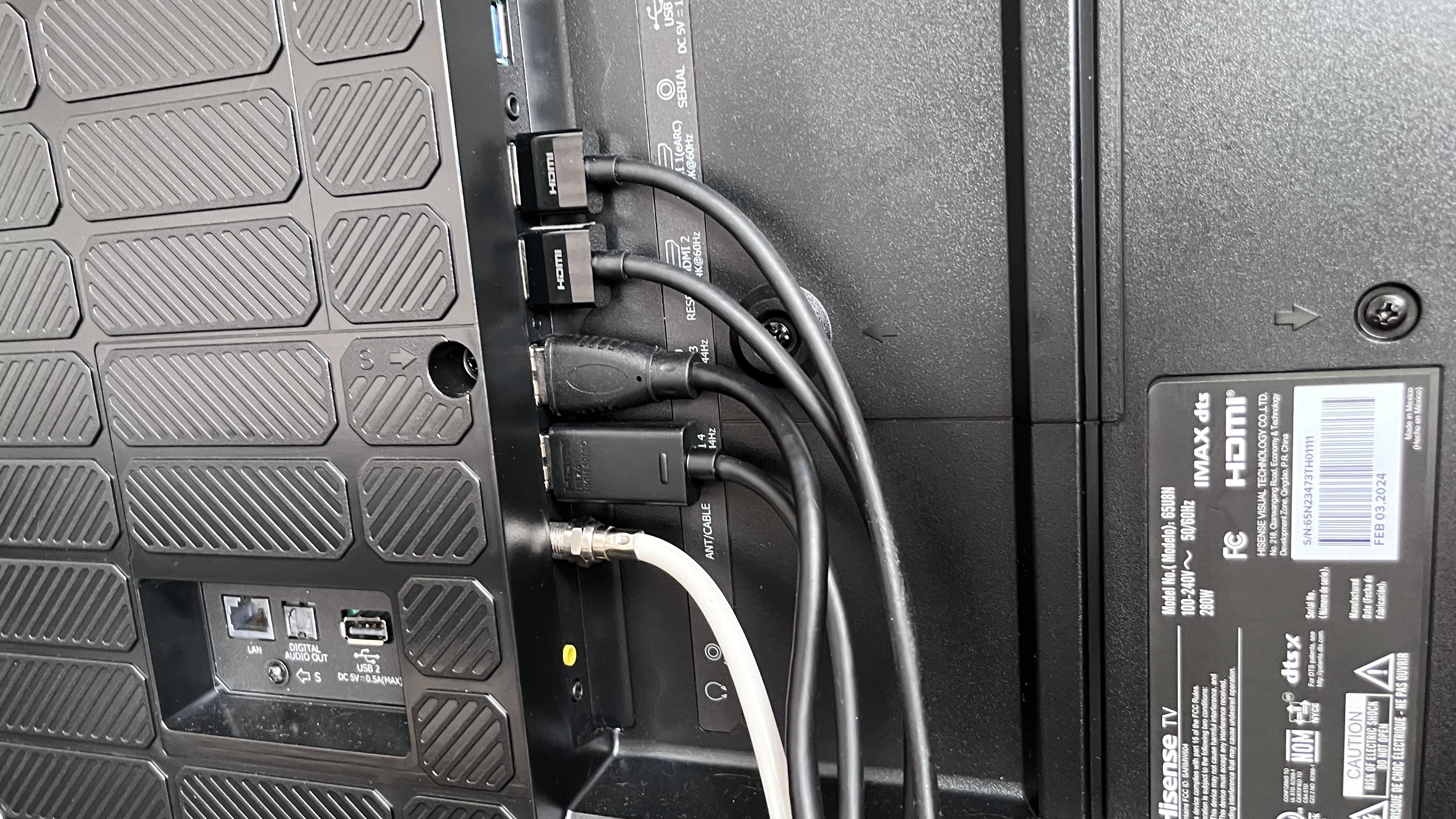
Hisense U8N review: Features
- 2x HDMI 2.1 inputs with 144Hz support
- Built-in ATSC 3.0 tuner
- Low-reflection screen
Hisense U8N series TVs feature a new Hi-View Engine PRO processor that, according to the company, “leverages deep learning” to deliver AI-fueled dynamic HDR tone mapping, face detection, and detail enhancement. The mini-LED backlight in U8N series TVs is specified as having twice as many local dimming zones as last year’s U8K series models. It also has an anti-glare low-reflection screen, a 50W 2.1.2-channel built-in speaker system with Dolby Atmos and DTS:X support, Wi-Fi 6E for streaming, and an ATSC 3.0 tuner in the US to receive next-gen TV broadcasts.
For high dynamic range support, the U8N series handles Dolby Vision (IQ), HDR10+, HDR10, and HLG formats, and there’s a Filmmaker Mode for an accurate, director-approved picture out-of-the-box without having to play with picture settings. The U8N series is also IMAX Enhanced certified.
Gaming features on the U8N series include two HDMI 2.1 ports with support for up to a 144Hz refresh rate, VRR including FreeSync Premium Pro, and 4K Dolby Vision gaming. The Google TV smart TV platform is used for US models and Hisense’s own VIDAA platform in the UK and Australia. AirPlay 2 and Chromecast are onboard for wireless streaming, and Google voice assistant is supported, with the option to use either the remote control’s built-in mic or the TV’s internal mic for hands-free control.
- Features Score: 4.5/5
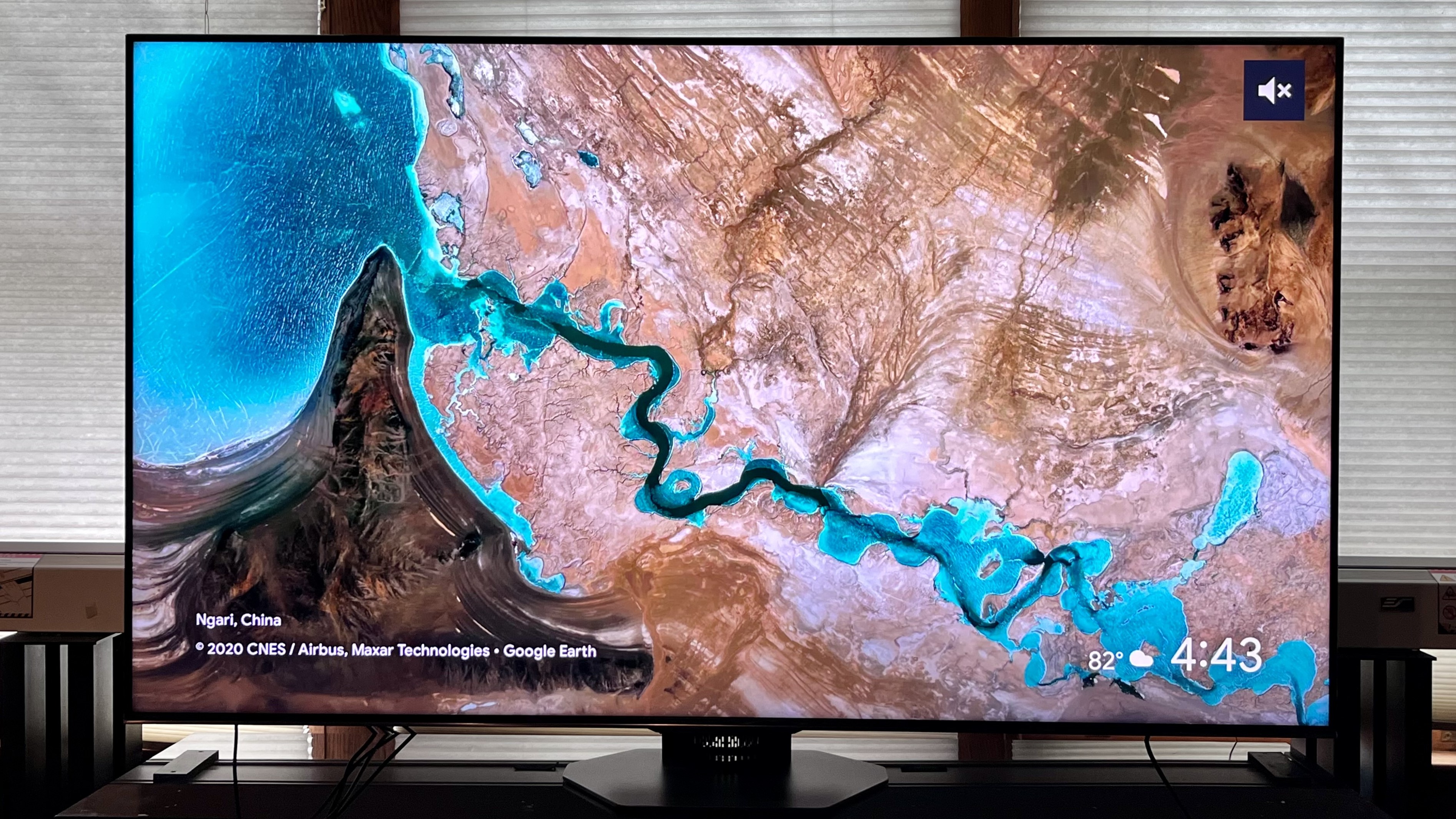
Hisense U8N review: Picture quality
- High brightness
- Powerful local dimming
- Just-average motion handling
I've mentioned it a few times already, but this TV is astonishingly bright. Measured in Filmmaker mode at the default picture settings, the 65-inch U8N essentially matched the peak brightness numbers (in Movie mode) of the TCL QM851G, which had earned a designation as the brightest TV TechRadar had yet tested at the time of our review. An HDR white window pattern covering 10% of the screen yielded 2,851 nits, and a full-screen pattern measured 805 nits. The U8N also had outstanding brightness in Standard mode with both HDR and standard dynamic range sources, measuring 2,920 and 2,770 nits, respectively, on a 10% pattern.
The U8N also had strong measured results for color, hitting 96.3% of UHDA-P3 (the color space used for mastering 4K Blu-rays and digital cinema and streaming releases) and 81.9% of BT.2020. Color accuracy in Filmmaker mode was below the margin of error threshold we use for a benchmark (ie, if it were any more accurate, you wouldn't be able to tell the difference anyway), though grayscale accuracy came in slightly above that point – a situation helped by changing the Gamma preset in the TV’s picture Brightness settings sub-menu to 2.2, bringing it to a high-enough level of accuracy.
What did all of the above equate to when watching TV with the Hisense U8N? Pictures were wonderfully bright and punchy, with impressive detail and depth. Watching a broadcast of the 2024 Summer Olympics in Paris, the powerful effect of overhead lights beaming on the athletes brought the games to life, while colors in the uniforms looked rich and robust. Mind you, this was a regular high-definition broadcast, though it was carried with Dolby Vision HDR in the US on ATSC 3.0 broadcast TV channels.
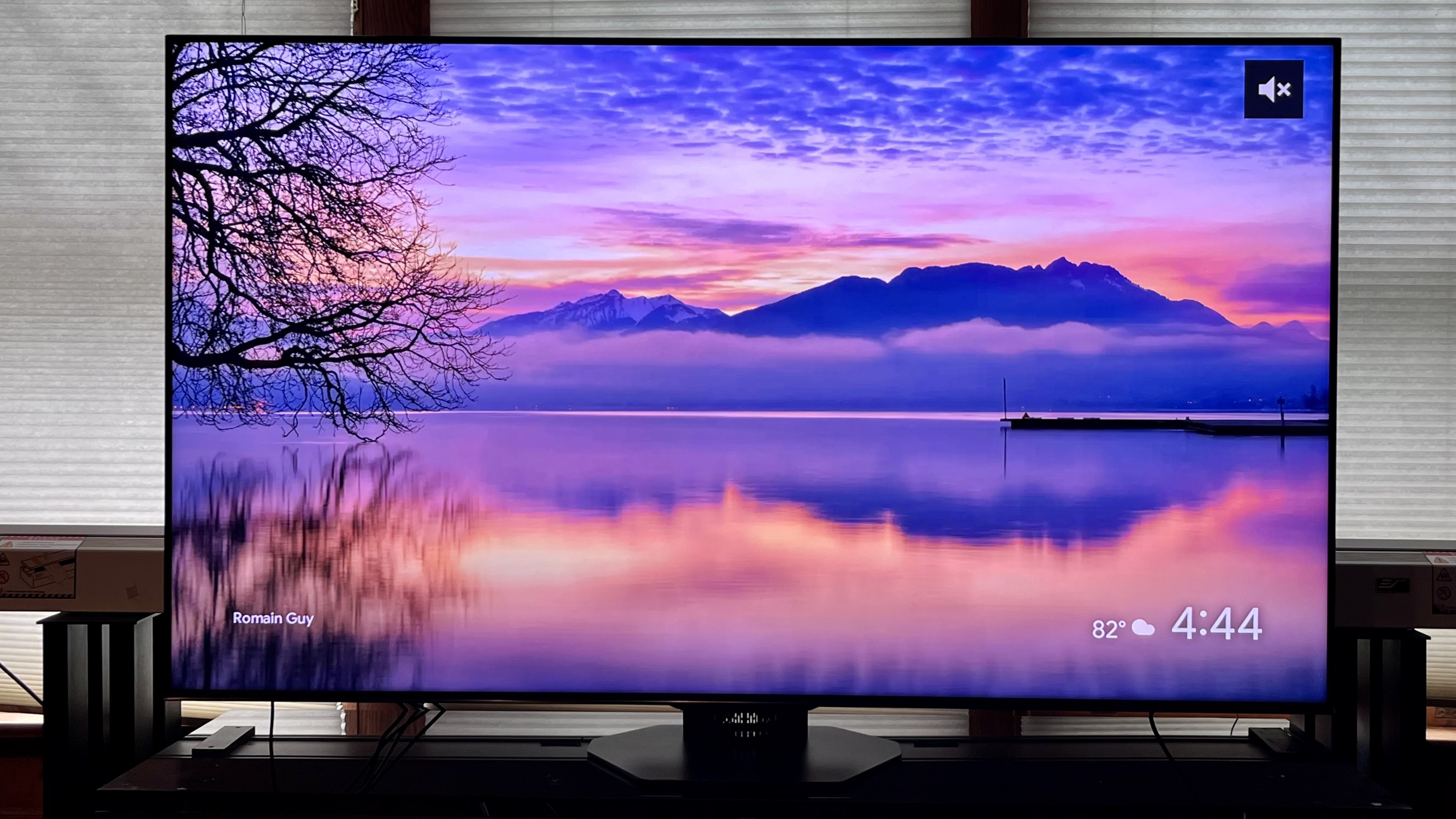
I generally found the Hisense U8N to be a great TV for viewing sports, with its high brightness complemented by a low-reflection screen that made quick work of any would-be glare induced by my room’s overhead lights. The one weak point was the U8N’s off-axis uniformity – when viewed from a far off-center seat, both color and contrast noticeably faded.
The U8N’s powerful local dimming delivered deep blacks and refined shadows in shows such as House of the Dragon on Max. When I watched the season 2 finale, scenes that take place in dark chambers revealed plenty of detail in the backgrounds and the characters’ clothing. Candles illuminating these spaces popped out briskly against the dark backgrounds, giving pictures a strong sense of dimensionality.
Checking out a few segments from the demo reel section of the Spears & Munsil Ultra HD Benchmark 4K Blu-ray disc that I use to evaluate local dimming, there were virtually no backlight blooming artifacts to be seen in high-contrast images. A starfield test sequence indicated that the TV’s local dimming was a bit too aggressive at its High setting (the default in Filmmaker Mode), however, obscuring bright pinpoints of light that were otherwise visible with the local dimming set to Low or Off.
Motion handling on the U8N is one of its weaker points. When I watched a scene from No Time to Die where James Bond walks across a craggy hillside cemetery, the texture of the landscape and the monuments lining it both lost detail and took on a “smeared” quality as the camera panned horizontally. Setting the Blur and Judder adjustments in the Custom Motion Enhancement sub-menu to a low setting (I settled on 3 for both) fixed this, however, and didn’t introduce any noticeable soap opera effect.
- Picture quality score: 4.5/5
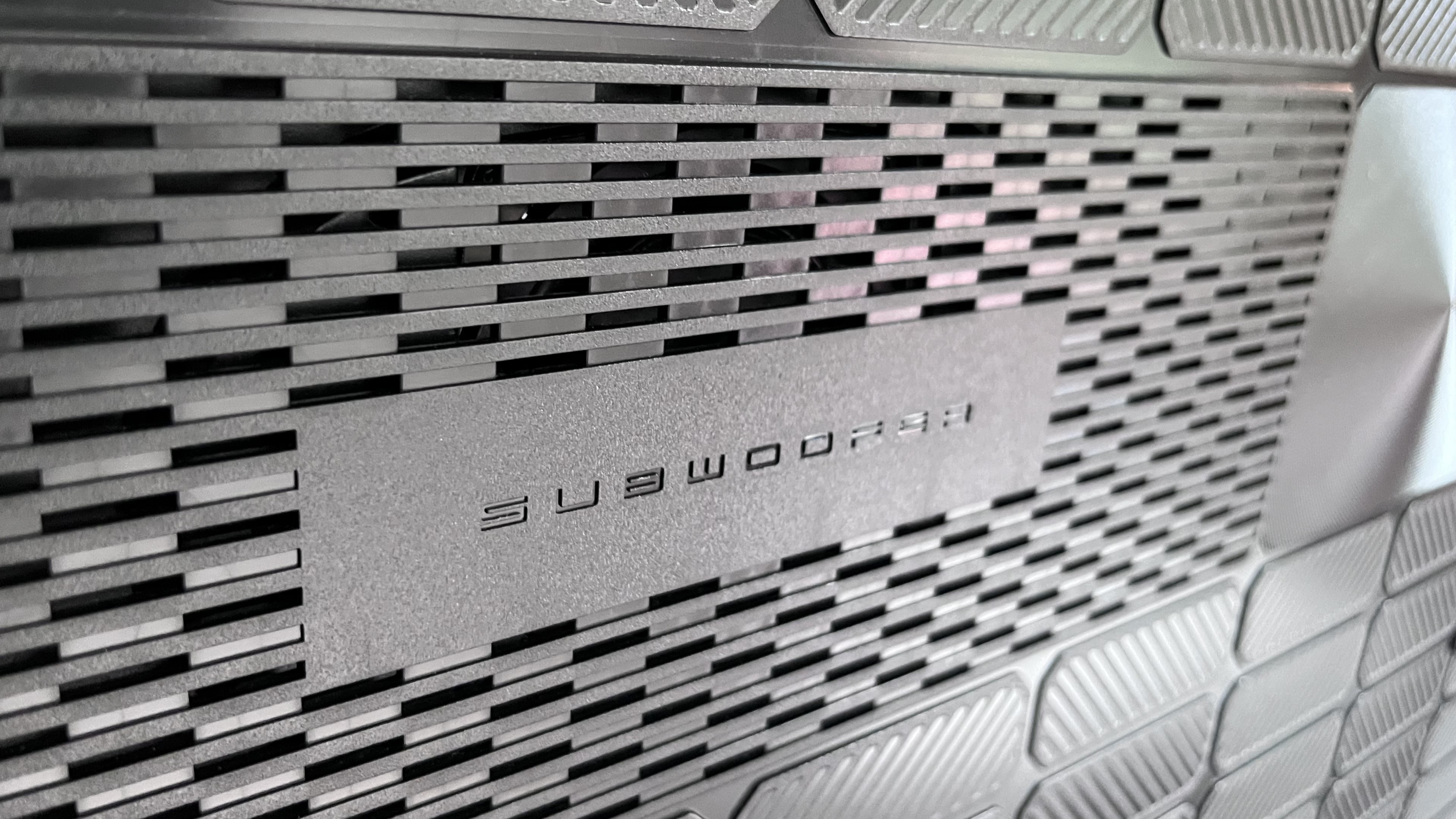
Hisense U8N review: Sound quality
- 2.1.2-channel Dolby Atmos speaker system
- Extensive sound adjustments
- Very good sound quality
The Hisense U8N’s 2.1.2-channel built-in speaker system supports both Dolby Atmos and DTS:X immersive sound formats. A subwoofer on the TV’s back panel (a slightly protruding, vented section that’s actually labeled “subwoofer”) adds a good dose of bass to soundtracks and there are upfiring speakers for height effects.
Hisense provides plenty of settings to tweak audio quality in the TV Sound Effect menu. There are seven sound mode presets, including Theater (the one I mainly used) and Intelligent Sound. An Advanced Settings sub-menu offers Auto Acoustic Tuning, a process that uses the mic built into the remote control to adapt the sound to the space the TV is set up in, along with Equalizer, left-right Balance, and subwoofer level settings.
I was very impressed with the U8N’s sound quality. Dialogue was clear and full, and the built-in subwoofer made bass effects sound surprisingly weighty. The sound level was plenty loud in my space even with the volume at a relatively low setting. When I watched a chase scene through a village in No Time to Die, directional effects such as the trajectory of the cars and motorcycle came across vividly, extending well beyond the screen, and Atmos effects such as the clanging of a church bell had an impressive sense of height as well. Although we usually recommend adding one of the best Dolby Atmos soundbars to a TV, I think plenty of people will be happy with the U8N’s built-in speakers.
- Sound quality score: 4.5/5
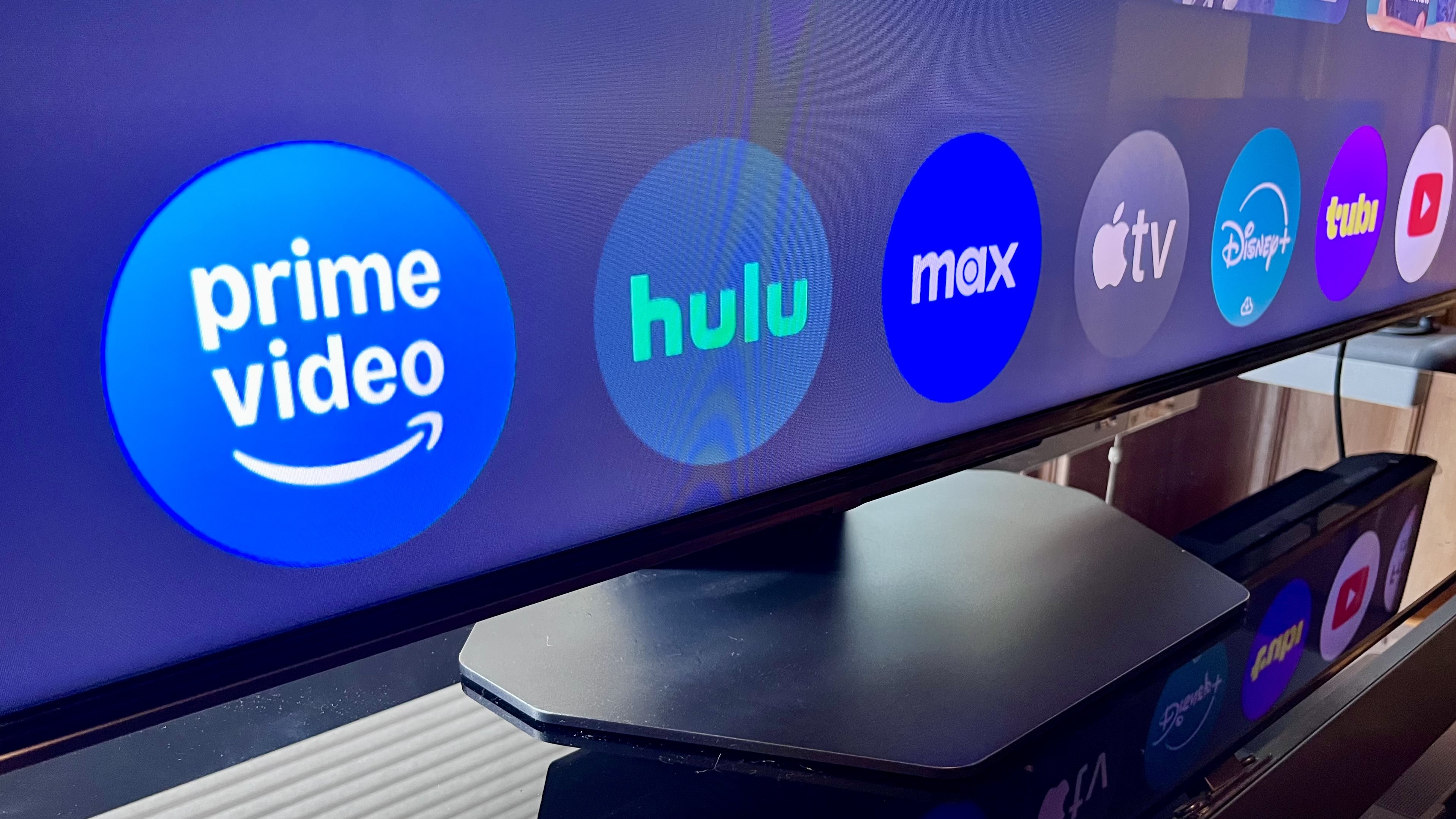
Hisense U8N review: Design
- Basic, pleasing design
- Four HDMI ports (2x HDMI 2.1)
- Backlit remote control
The HIsense U8N has a basic, but pleasing design. Metal is used for the TV’s frame and pedestal stand and the screen is surrounded by a 0.25-inch thin bezel.
Connections on the TV’s side panel include food HDMI ports (2x HDMI 2.1) and an optical digital audio output, headphone jack, and a 3.5mm analog composite video/stereo audio input. There are also two powered USB type-A ports, along with Ethernet and serial data connections.
The Hisense U8N comes with a better-than-average remote control. Although comprised of plastic, it has a faux-brushed aluminum surface and sits well in the hand. The keypad is backlit, and there are direct access buttons for the Netflix, Prime Video, Disney Plus, YouTube, and Tubi streaming apps.
- Design score: 4/5
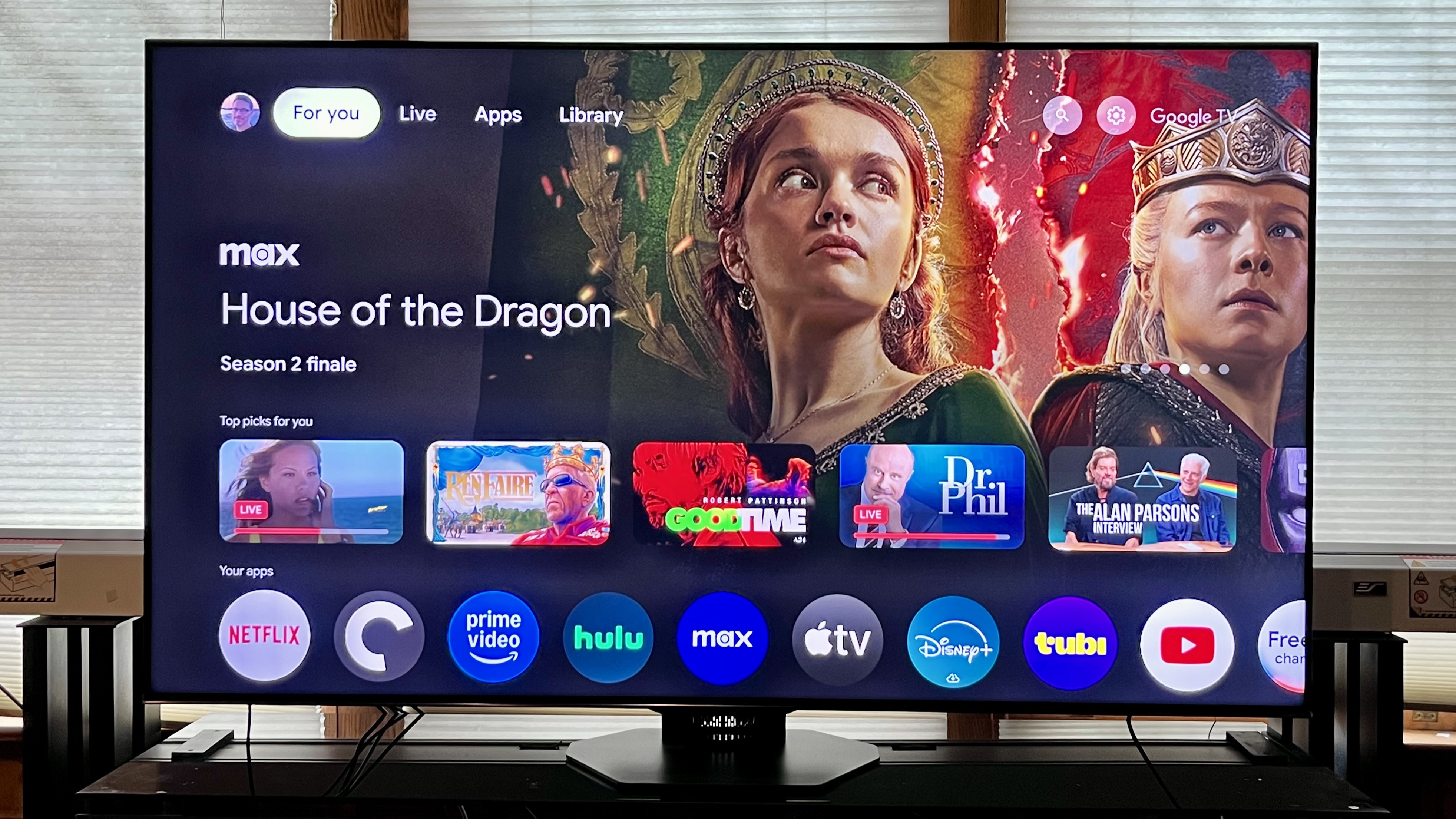
Hisense U8N review: Smart TV and menus
- Google TV with hands-free voice assistant
- AirPlay 2 and Chromecast built-in support
- Extensive picture and audio settings
The U8N series uses the Google TV smart TV platform in the US, and Hisense’s own VIDAA platform in the UK and Australia. Google TV on the model I tested was similar to my experience with other TVs that use the same platform, including models from Sony and TCL. Google TV has a fairly simple main screen layout, with a large top window and a central row displaying suggested content, with some suggestions drawn from your viewing and Google web browsing history. A bottom row lists apps you’ve subscribed to, and you can edit the order of apps or remove them from the row altogether.
Tabs at the top of the screen let you switch between the main Google TV interface and Live, Apps, and Library screens, with the latter showing movies and shows you’ve purchased or rented from Google TV. The Live TV program grid can be sorted by a range of channel categories (Google TV, Popular, Movies, News & Opinion, Kids, and more) and also lets you view only broadcast TV programs pulled in by the built-in tuner. A separate broadcast TV guide provides a more detailed view of broadcast listings and it provides extended data for ATSC 3.0 channels (US models only). Using this, I was able to determine that the Summer Olympics in Paris was being broadcast in HDR with Dolby Atmos audio, both of which are features of the next-gen ATSC 3.0 broadcast format.
As with other Google TVs, picture settings are easily accessed by pressing the gear icon on the remote control and then selecting the picture menu. Another, more convenient, option on the Hisense U8N is to press the Menu button on the remote, which calls up a scrolling horizontal bar at the bottom of the screen that provides quick access to preset picture and sound modes. The bar layout can also be customized, letting you add settings like brightness, local dimming, and more for easy access.
- Smart TV & menus score: 4/5
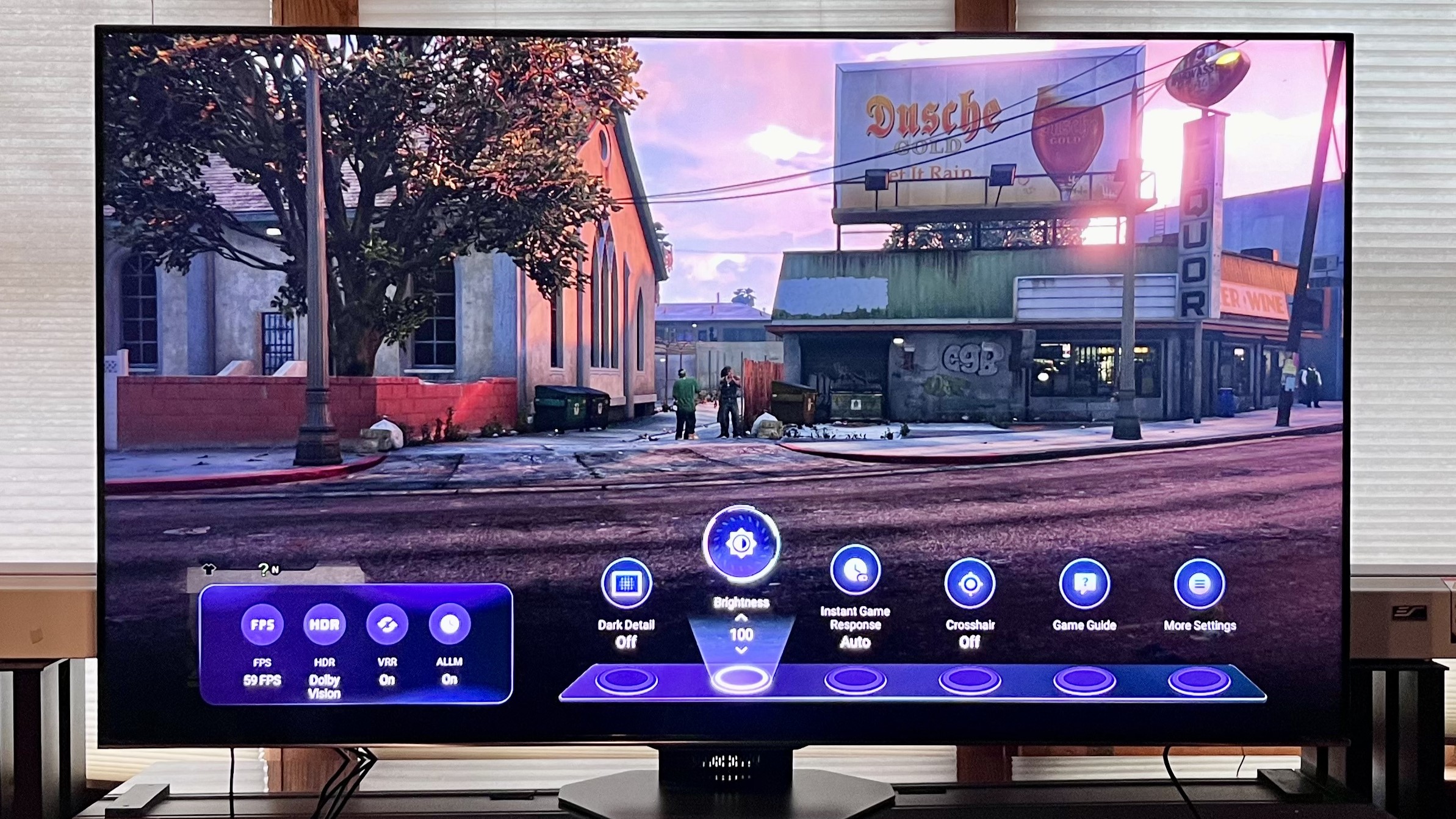
Hisense U8N review: Gaming
- 2x HDMI ports with 4K 120Hz, VRR up to 144Hz support
- Game Bar menu
- 13.1ms measured input lag
The Hisense U8N features two HDMI 2.1 ports with support for 4K 120Hz, VRR up to 144Hz (including FreeSync Premium Pro), ALLM, and Dolby Vision 4K gaming. A Game Bar menu can be accessed when the TV is in PC/Game mode, giving you quick access to gaming-related adjustments.
Input lag measured with a Bodnar 4K input lag meter was 13.1ms. That’s a slight improvement on last year’s Hisense U8K, and while higher than some of the best gaming TVs, it’s below the 15ms threshold that serious gamers look for.
- Gaming score: 4/5
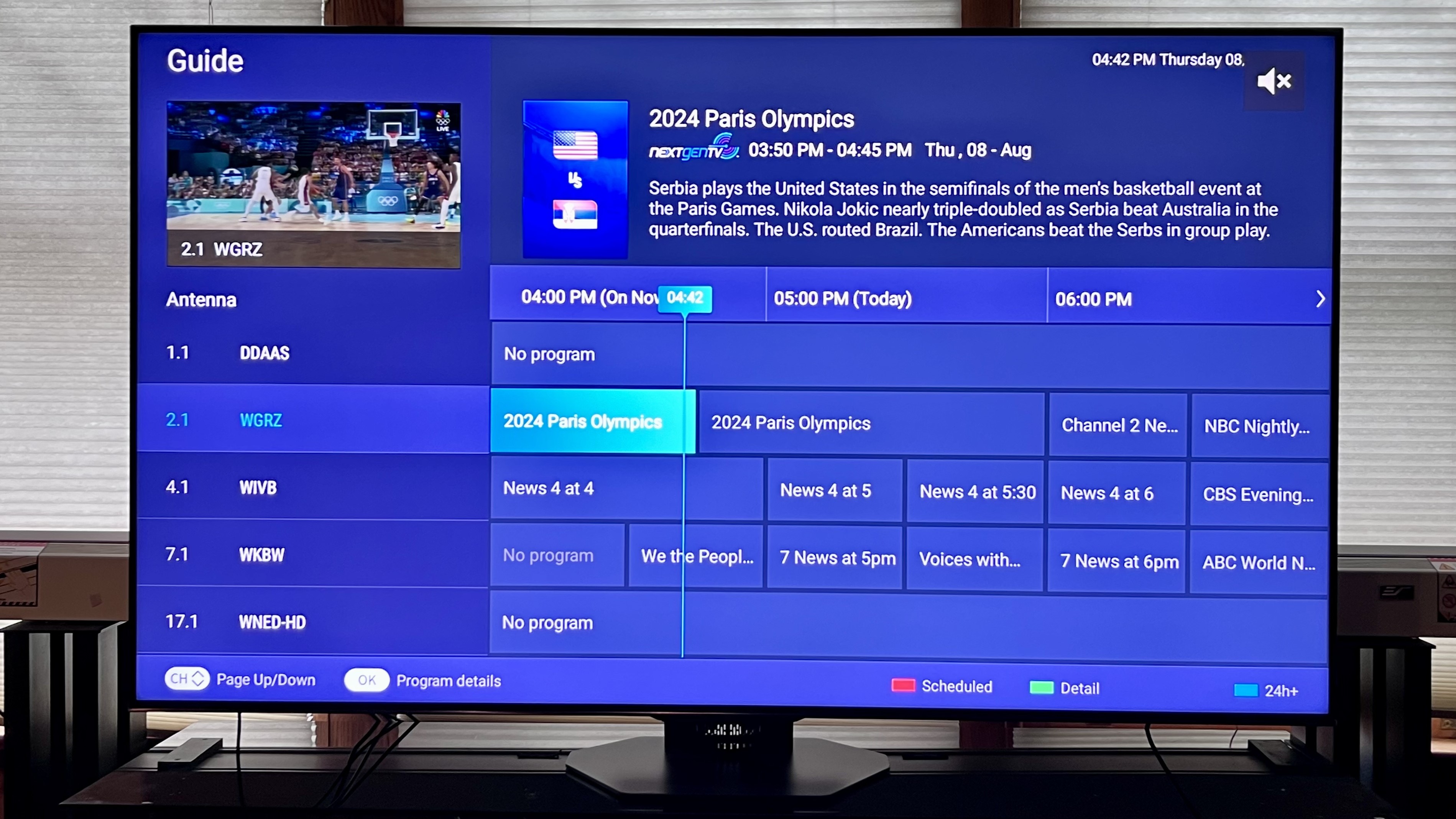
Hisense U8N review: Value
- Great value
- Price drops since launch
- Less pricey than traditional premium TV options
The 65-inch version of the Hisense U8N that I tested lists for $1,499.99 / £1,799 / AU$2,699.99 and is currently selling for $1,299 in the US. That’s an excellent deal for a TV with great overall picture quality plus high-level gaming features.
Looking over the competition, the TCL QM851G, another 2024 mini-LED model, hits even higher brightness peaks than the U8N, and also features an anti-reflection screen for daytime viewing. The QM851G pretty much matches the Hisense when it comes to gaming features, though it has more powerful 2.1.2-channel built-in speakers.
And then there’s the Samsung factor. The Samsung QN85D, the company’s least expensive mini-LED model, currently sells for $1,599 at 65 inches. It has lower peak brightness than the Hisense, a noticeable degree of backlight blooming, and similar limitations when it comes to off-axis viewing. Where the QN85D shows advantages over the U8N is its more sophisticated Tizen smart TV platform and comprehensive set of gaming features, including four HDMI 2.1 ports and a Gaming Hub that provides convenient access to cloud-based gaming apps from Xbox, Nvidia GeForce Now, and others.
Another TV that competes with the Hisense U8N is the Samsung QN90C (currently $1,399 for the 65-incher). Although it’s a 2023 model, the QN90C is still rated as our best TV for sport in that guide, has higher brightness than the Samsung QN85D (though it’s not as bright as the Hisense), better off-axis viewing uniformity, and the same suite of gaming features. At just $100 more than the Hisense U8N, it’s a tempting choice for sports fans and gamers while stocks last.
But that just emphasizes what fantastic value the Hisense is – even Samsung's previous model still isn't being sold as cheaply as the U8N, let alone any of the Hisense's 2024 competition. You can't get more TV for your money than this right now.
- Value score: 5/5
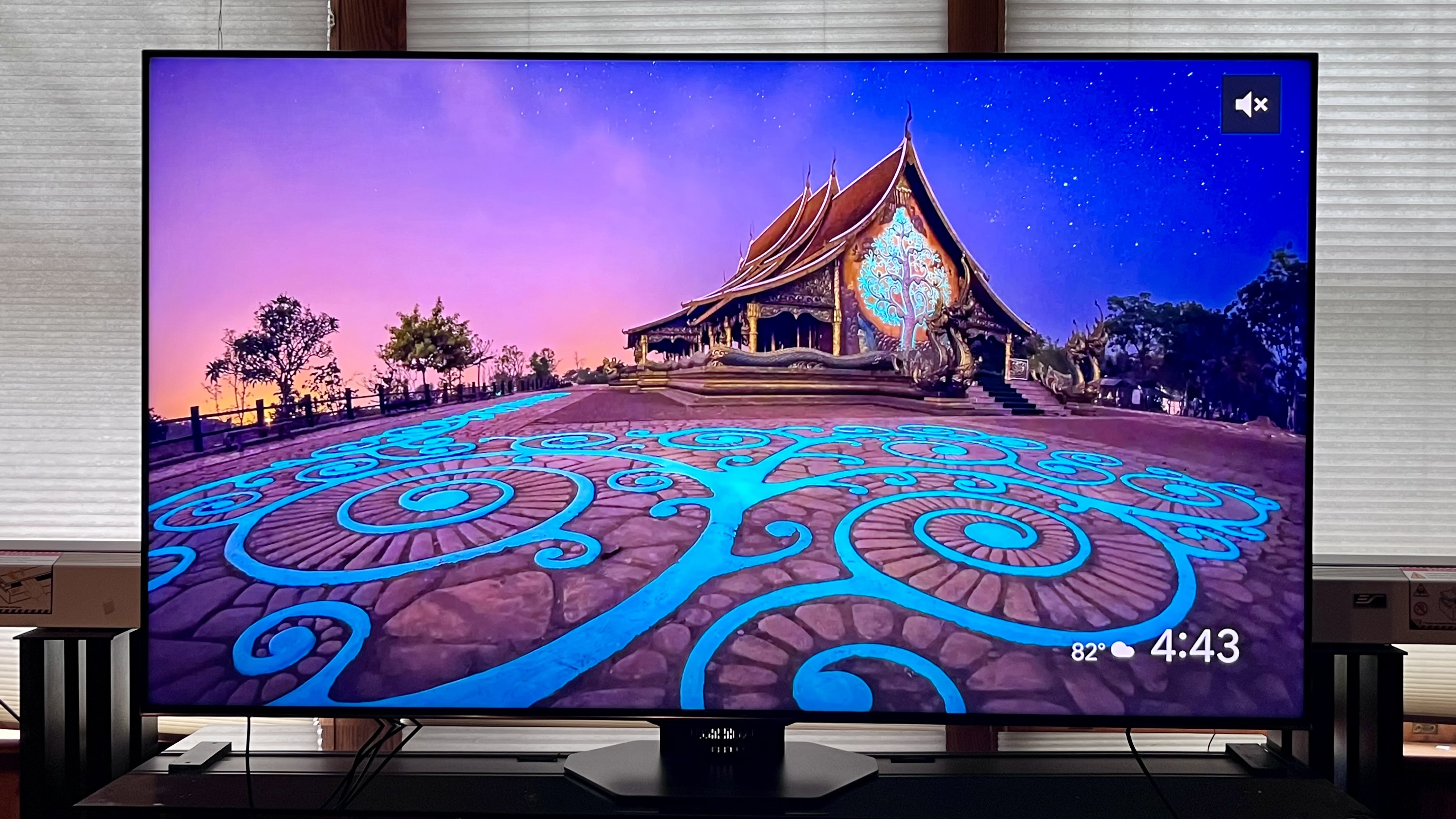
Should I buy the Hisense U8N?
Buy it if…
Don't buy it if…
Also consider...
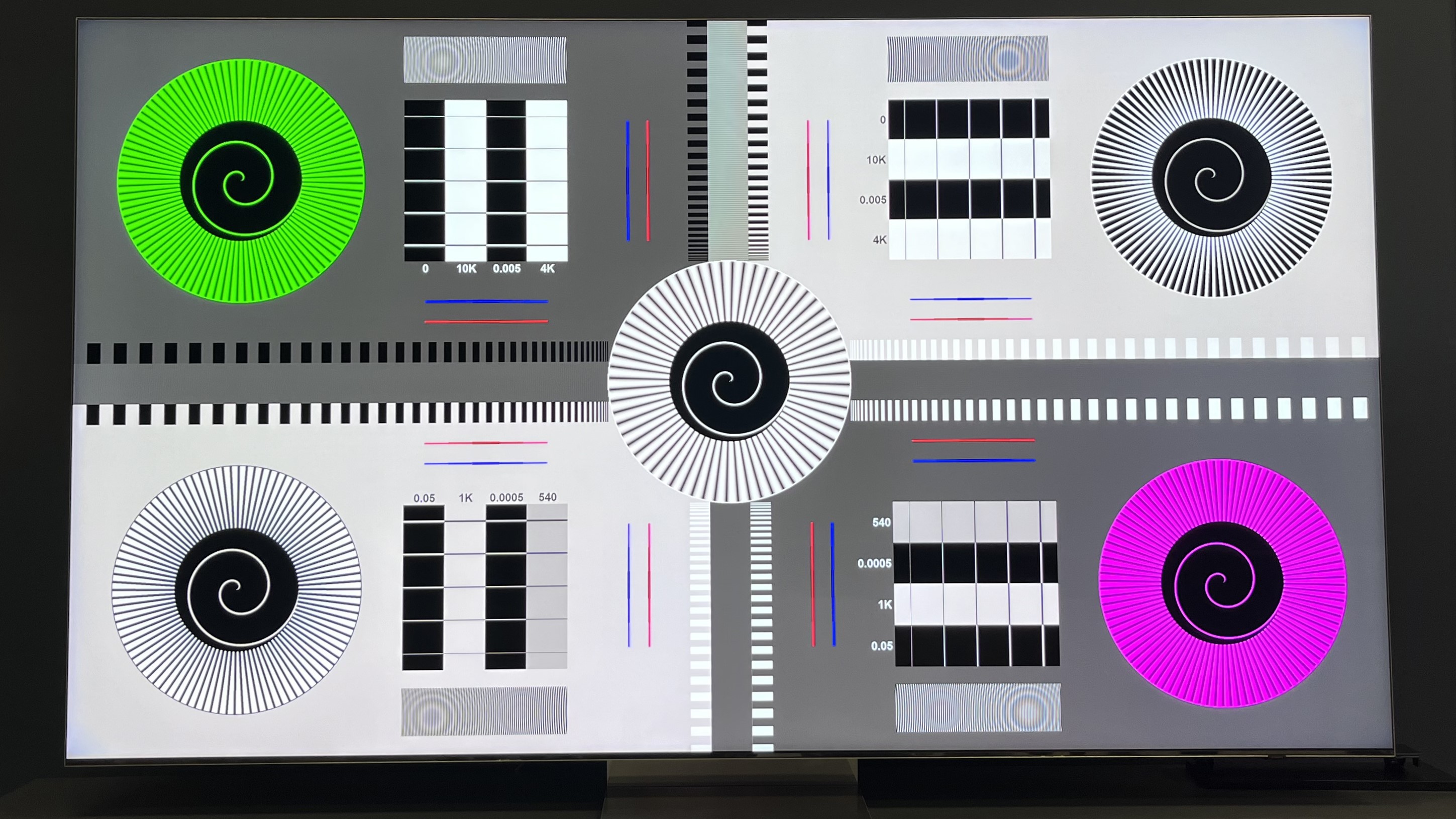
How I tested the Hisense U8N
- Tested over two weeks
- Measurements made using Calman color calibration software
- Movie picture mode used for subjective tests
When I test TVs, I first spend a few days or weeks of casual viewing to assess out-of-box picture presets and familiarize myself with its smart TV menu and picture adjustments. I then select the most accurate preset (typically Filmmaker Mode, which was the case with the Hisense U8N) and measure grayscale and color accuracy using Portrait Displays’ Calman color calibration software. The resulting measurements provide Delta-E values (the margin of error between the test pattern source and what’s shown on-screen) for each category, and allow for an assessment of the TV’s overall accuracy.
Along with those tests, I make measurements of peak light output (recorded in nits) for both standard high-definition and 4K high dynamic range using 10% and 100% white window patterns. Coverage of DCI-P3 and BT.2020 color space is also measured, with the results providing a sense of how faithfully the TV can render the extended color range in ultra high-definition sources.
For the Hisense, I used the Calman ISF workflow to assess its picture accuracy, which was good in the default Movie mode, though it required some calibration to achieve a more perfect result.. I also watched a range of reference scenes on 4K Blu-ray discs to assess the TV’s performance, along with 4K HDR shows and movies streamed from Max, Netflix, and Hulu.
You can read an in-depth overview of how we test TVs at TechRadar for more information about our process.
- First reviewed: August 2024
- Read TechRadar's reviews guarantee







